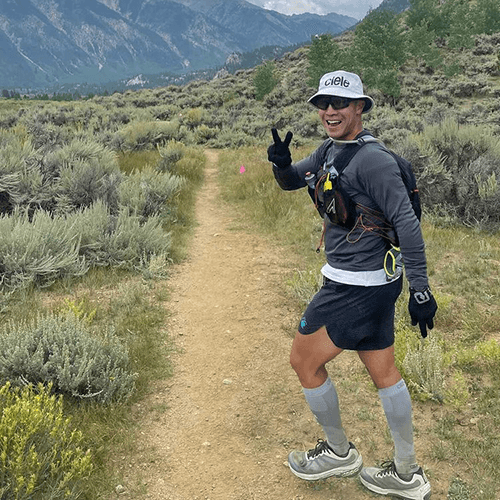Every ultra-runner has their own story of how they got to the start line of a race with a course longer than a marathon distance, and the runners of the world’s oldest 100 mile trail race, the Western States 100-Mile Endurance Run, are no exception.
Most participants in “Western States” gain entry via lottery after completing a qualifying race. But, as competitive races go, even after meeting all pre-requisites, hopefuls can end up on the waiting list, which is where Pon Somnhot found himself in 2013, 2014, 2015, 2016, 2017, and 2018.
“During that time, I ran multiple 100ks and 100 milers to requalify for the lottery each year,” Somnhot said. “In 2019, with 8 consecutive years and 128 lottery tickets I was finally selected from the lottery.”
However, as with many races, the COVID-19 pandemic shut down the 2020 race, and Somnhot, and the other 2020 entrants, waited until 2021.
“I took 2020 as an opportunity to get in solid training, but coupled with a move and a job transfer, that proved to be a challenge,” Somnhot said. “During the height of the pandemic, my wife and I relocated from the San Francisco Bay Area to the little town of Ashland, Oregon. I quickly got to know my new home trails and hit the ground running. I’m by no means a high mileage runner, averaging only about 45-50 miles per week, but I was climbing 10-11,000 feet per week thanks to the Ashland hills.”
The bulk of Somnhot’s Western States training consisted of:
- Easy road miles to work on aerobic capacity.
- Long trail runs with long descents to build race specific strength for the downhill demands of Western States, which are 18,000 feet of ascent, and a grueling 23,000 feet of descent.
- Work with a sports nutritionist to dial down hydration and race nutrition needs.
- Heat training in the sauna.
After eight years of anticipation, race day arrived for Somnhot with a celebratory mindset, staying grounded in appreciation for each mile that got him to the start line.
During the race, Somnhot said the elevation challenges of the course lived up to reputation.
“It was a hot day and the weather had its way with all of us,” he remembered. “The constant descents brought on fatigue to my legs. The aid stations were the true gems of Western States and each runner received top notch care from the volunteers.”
During the race, Somnhot experienced an aggravated IT band from all the downhill running, and he fought back nausea that would periodically rear its head at inconvenient times.
“Luckily, in a previous life I was a competitive eater,” he said. “Those skills came in handy and I was able to force feed myself to prevent any bonking.”
“On day two, the morning sunrise and heat slowly became more intense as the hours passed by,” he remembers. “My mood began to change as I realized I was getting closer to the finish. When we arrived at the second to last aid station at mile 94 an aid station volunteer smiled and said ‘You’re going to finish Western States!’ That was when reality really started to sink in. It wouldn’t be long until this long journey would come to an end.”
Through it all, Somnhot’s most cherished memory was sharing the last 22 miles with the unsung hero of his eight-year journey to the race – his wife Angela. As they passed the landmark, “No Hands Bridge” they could hear the cheers from the finish a few miles away.
“Before the finish, we rounded a point and were greeted at the top by my crew, The Pon Stars” he remembers. “We all ran the final mile together to Placer High School onto the track, and finally, to the finish line of Western States.”
Somnhot finished with a personal record for the distance and slipped under the golden hour at 28 hours 52 minutes and 9 seconds.
